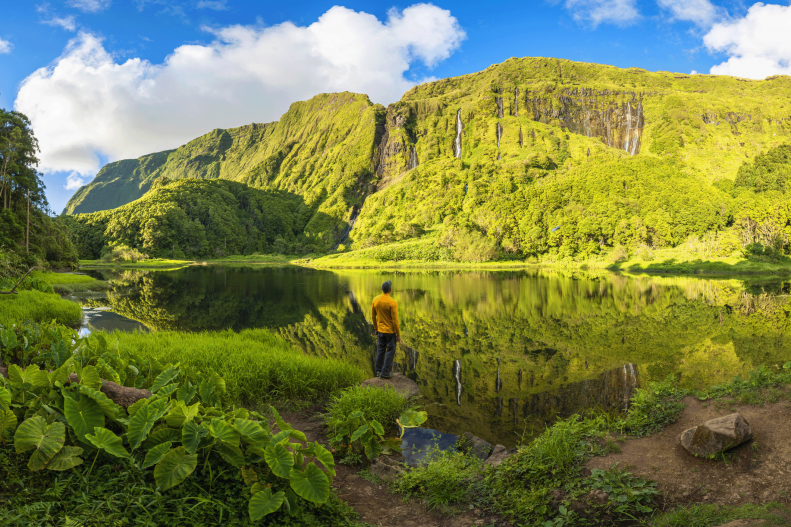
Shifting the natural cost curve: The role of investors in protecting biodiversity
- 11 April 2023 (5 min read)
Key points:
- Human activity, alongside climate change, has led to increased loss of biodiversity
- Sustainable agricultural practices, and the protection of oceans and coastlines, are all developments that can help slow down biodiversity loss
- Focusing on investing in firms more conscious of their biodiversity impact should provide rewards for the planet and for investors
The damage caused by climate change to the planet, society and economic activity is becoming increasingly obvious every year. Floods and droughts, extreme temperatures, and destructive storms all bring with them tangible impacts on people’s lives and livelihoods. Amongt many others, the financial community has long recognized the existential threat and the truth that man-made activity is responsible for the generation of greenhouse gases that lead to rising atmospheric temperatures and imbalances in the climatic system.
There is increased focus on setting policy, changing consumer habits, and redirecting capital to combating climate change before it's too late. Investors are investing in businesses and technologies that both mitigate the effects of climate change and adapt to them so to achieve a more sustainable future. In doing so, asset owners and managers have pledged to reduce carbon emissions from their investment portfolios and ensure their investee companies deliver the reporting and strategic targets.
Human activity, along with the impact of climate change, has also led to increased loss of biodiversity. Growing awareness of the risks to sustainable living from – degradation of land-use, deforestation, soil erosion, and pollution in our rivers and seas – is also starting to impact investment strategies and corporate behavior.
Measuring risk
While it is more difficult to put a market price on the externalities of biodiversity loss, in the same way as it is possible to price carbon emissions, companies face regulatory, customer, and financing risks if they do not take care of their environmental footprint. Increasingly, investors are adapting metrics designed to assess biodiversity footprints which complement those designed to measure climate impact. These will provide greater richness to environmental, social and governance (ESG) analysis and help portfolios target better biodiversity outcomes.
The reality is biodiversity loss is proceeding at an alarming rate and economic activity must change to stop this reaching cataclysmic levels. Economic behavior affects the ecosystem at all stages of the value chain. Fundamentally, land and resource use can have a negative impact on biodiversity, by disturbing ecosystems, displacing species, or putting them at risk of extinction.
Natural resource depletion is an obvious cause of biodiversity loss, especially when mining and extraction activities disturb natural habitats. The waste produced and the transportation of mined resources to different markets also have their negative impacts on biodiversity. More broadly, production creates waste – pollution – and uses energy, while the distribution of goods and services is also resource dependent and generates materials harmful to the environment – such as packaging. Consumption and waste disposal are also activities that can be detrimental.
How investors can play a role
Understanding the interaction between economic activity and its impact on the environment through enhanced monitoring and reporting and via scientific developments that highlight the risks of biodiversity loss can help investors deploy capital to businesses with best practices. Examples abound: agricultural activities without pesticides – which lead to nutrient leak in soil, or companies using biodegradable or reusable packaging for goods distribution. Parallel to the development of technology in the renewable energy space, as techniques are introduced that have a lower financial and environmental cost, the economics of scale will work in favor of the businesses using them.
Our ecosystems lose biodiversity every time trees are cut down to provide space for cattle grazing, every time a green field site gives way for construction, and every time waste is discharged into rivers. That loss creates threats to life. Loss of forests worsens the carbon balance in the atmosphere. Soil degradation reduces crop yields. Nitrates flowing from farmland into rivers disturb the ecological balance which sustains healthy plant and animal life and pollutes the water supply. Changes to natural habitats introducing alien species risks crop damage and yields.
We can do better. We can reduce the impact of economic activity through better practices and preserving habitats while thinking about what we really need to consume. Better food production processes from farm to fork will not only help protect biodiversity but can deliver health benefits as well, a financial positive for society. Public education directed at diversifying diets away from eating meat could reduce the land needed for cattle grazing and the necessary feed crops, as well as reducing methane generation, an important greenhouse gas.
How data and disclosure can help
In the coming years, led by the Taskforce on Nature-related Financial Disclosures (TNFD) framework and metrics such as the Corporate Biodiversity Footprint, investors will have more granular data on how businesses they invest in operate and what "costs" they are imposing on our natural world. As is the case with climate change, the focus on investing in companies more conscious of their impact on biodiversity should provide rewards for the planet and for investors.
From an economic point of view, achieving sustainability means incorporating climate and biodiversity loss into our consideration of the cost of production. Unfettered capitalism has led us to where we are today. Climate change is threatening the ability of humans to live in certain parts of the world and to increasingly raise the cost of economic activity. Being at risk from extreme weather or needing to adapt to the worst of climate change brings potential and actual costs to businesses, therefore reducing their returns. Biodiversity loss threatens food and water supplies and the degradation of the natural environment, with consequences for health and welfare.
Regulation needs to play an increasing role. Land and ocean resources need to be protected. Costs should be imposed on companies whose activities contribute to recognized biodiversity loss. We are moving towards greater disclosure from companies which will allow capital to be allocated not only to where economic returns are the highest but where climate and biodiversity costs are the lowest.
It is clear from what is happening in the race to net zero that technological innovations can play a role in shifting the natural cost curve. Sustainable agricultural practices, more regulated land-use, the use of renewable energy, biodegradable packaging, protection of oceans and coastlines – these are all developments that can help slow down biodiversity loss. They, and other developments, provide investors with plenty of opportunities that will not only be positive for the planet but may yield returns as technologies that help reduce biodiversity loss take more market share.

